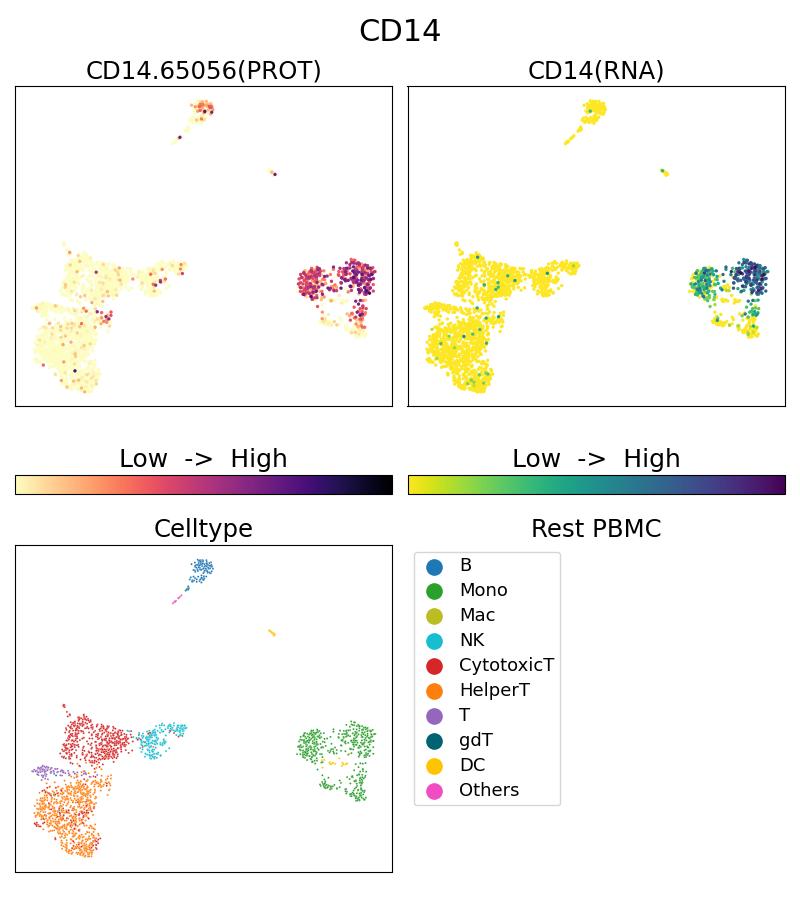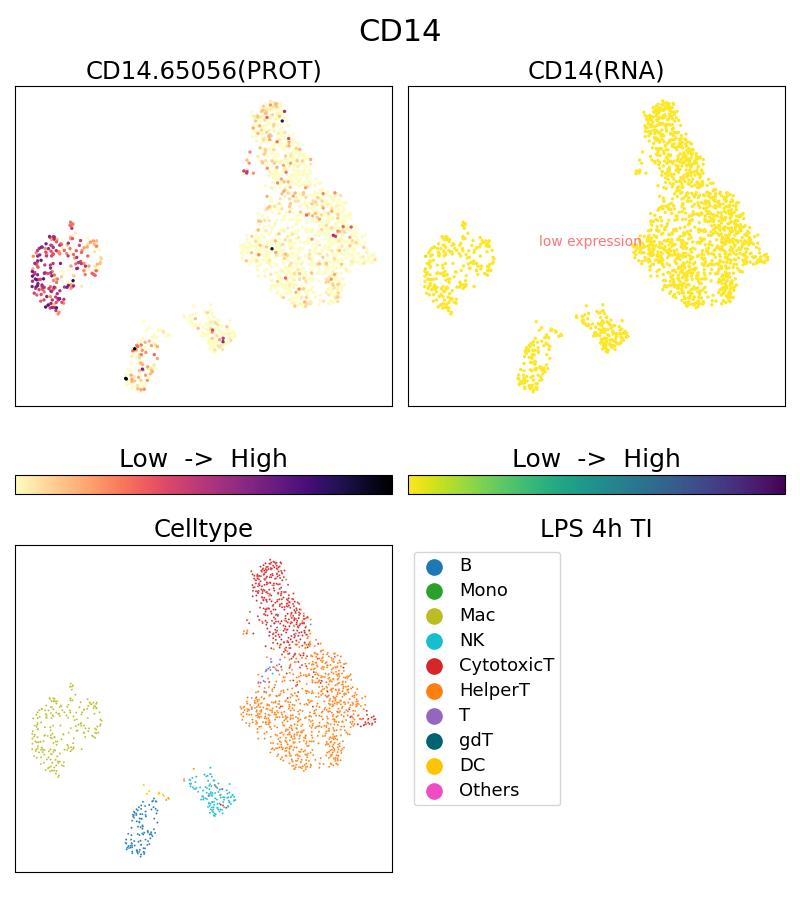验证数据展示
经过测试的应用
| Positive Single Cell detected in | 10x Genomics Gene Expression Flex with Feature Barcodes and Multiplexing product. |
推荐稀释比
| 应用 | 推荐稀释比 |
|---|---|
| SINGLE CELL | <0.5ug/test |
| It is recommended that this reagent should be titrated in each testing system to obtain optimal results. | |
产品信息
G65056-1-5C targets CD14 in Single Cell applications and shows reactivity with Human samples.
| 经测试应用 | Single Cell Application Description |
| 经测试反应性 | Human |
| 免疫原 |
Thymocytes and peripheral blood lymphocytes from a remission AML patient 种属同源性预测 |
| 宿主/亚型 | Mouse / IgG2a |
| 抗体类别 | Oligo Conjugate |
| 产品类型 | Monoclonal |
| 全称 | MultiPro® 5CFLX Anti-Human CD14 (UCHM-1) |
| 别名 | CD14, CD14 molecule |
| 计算分子量 | 375 aa, 40 kDa |
| GenBank蛋白编号 | BC010507 |
| 基因名称 | CD14 |
| Gene ID (NCBI) | 929 |
| ENSEMBL Gene ID | ENSG00000170458 |
| RRID | AB_3673906 |
| 偶联类型 | 5CFLX |
| 完整寡核苷酸序列 | CGGAGATGTGTATAAGAGACAGCTTGCGTCTACCGCCCCCATATAAGAAA |
| 条形码序列 | CTTGCGTCTACCGCC |
| 形式 | Liquid |
| UNIPROT ID | P08571 |
| 储存缓冲液 | PBS with 1mM EDTA and 0.09% sodium azide , pH 7.3. |
| 储存条件 | 2-8°C Stable for one year after shipment. |
背景介绍
CD14 is a 50-55 kDa glycosylphosphatidylinositol-anchored glycoprotein preferentially expressed on monocytes and macrophages, and at lower levels on granulocytes (PMID: 3385210; 2462937; 7685797). CD14 can also exist as a soluble protein. CD14 acts as a co-receptor for bacterial liposaccharides (LPS) (PMID: 1698311). It plays a major role in the inflammatory response of monocytes to LPS.
Protocols
| Our current MultiPro staining protocol for the cocktail | Download protocol |
| 10x Genomics CG000149_Demonstrated Protocol CellSurface Protein Labeling_Rev D.pdf | Download protocol |



